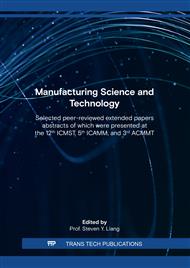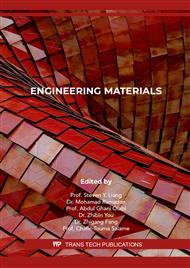p.123
p.129
p.139
p.147
p.153
p.163
p.169
p.177
p.183
The Durability and Leaching Behavior of Granulated Blast Furnace Slag, Fly Ash, and Waste Foundry Sand Geopolymers
Abstract:
Waste generation and management in industries is a major problem worldwide. In this study, granulated blast furnace slag (GBFS), fly ash (FA) + cement (CM), and de-silicated foundry sand (DFS) based geopolymers were developed and their leachability studied. The elemental composition showed that the raw materials studied had the highest compositions in SiO2 and Al2O3, which are the constituents desired for the formation of a geopolymer. The GBFS geopolymer had the highest unconfined compressive strength (UCS) of 30.977 MPa, followed by the FA + CM geopolymer with 16.704 MPa. The DFS geopolymer recorded the lowest strength. The mineralogy of GBFS geopolymer showed the presence of an amorphous phase which consisted predominantly of grossite. The FA + CM-based geopolymer had an amorphous and crystalline phase predominated by sillimanite. The DFS-based geopolymer consisted mainly of sodium silicate hydrate. The leaching tests showed that the concentrations of the elements in the leachates were all below the regulatory limits. All of the developed geopolymers were considered environmentally friendly. This study showed that GBFS geopolymer and fly ash + CM-based geopolymers have good durability and leaching behavior, with DFS-based geopolymers possessing poor durability but good leaching behavior. The studied geopolymers are suitable for use as building wall materials and paving bricks without compromising and polluting the environment.
Info:
Periodical:
Pages:
153-161
Citation:
Online since:
June 2022
Authors:
Price:
Сopyright:
© 2022 Trans Tech Publications Ltd. All Rights Reserved
Share:
Citation:



